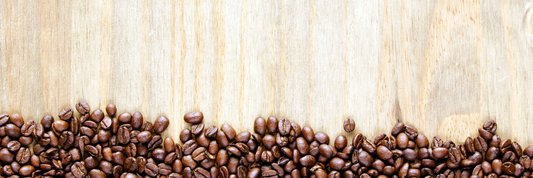Flexible packaging has become an integral part of modern consumer products due to its versatility, cost-effectiveness, and lightweight properties. However, choosing the right material for flexible packaging is crucial to ensuring product quality, safety, and sustainability. As environmental concerns rise, businesses and consumers are shifting towards sustainable packaging solutions to reduce waste and carbon footprints.
This article explores the wide range of materials used in flexible packaging, highlighting their properties, applications, and eco-friendly alternatives. Whether you're a brand owner or a packaging professional, understanding these materials will help you make informed decisions to meet both market demands and sustainability goals.
Comprehensive Guide to Types of Flexible Packaging and Their Eco-Friendly Options
Plastic Materials in Flexible Packaging
Polyethylene (PE)
Polyethylene is a widely used plastic in flexible packaging because it is lightweight, durable, and cost-effective.
-
Types of PE:
-
Low-Density Polyethylene (LDPE): Soft and flexible, commonly used for stretch wraps and films.
-
High-Density Polyethylene (HDPE): Stronger and more rigid, ideal for shopping bags and pouches.
-
-
Common Applications: PE is found in bags, shrink films, and liquid pouches due to its adaptability.
-
Eco-Friendly Alternatives: Recyclable polyethylene and bio-based PE from renewable sources like sugarcane offer greener options.

Polypropylene (PP)
Polypropylene is valued for its strength, flexibility, and moisture resistance.
-
Key Properties: Durable, resistant to wear and tear, and maintains freshness.
-
Applications: Used for snack wrappers, sachets, and storage containers.
-
Sustainable Options: Recyclable PP and bio-based PP contribute to eco-friendly packaging initiatives.

Polyethylene Terephthalate (PET)
PET is a clear plastic that protects food by keeping out moisture and air, making it ideal for food and beverage packaging.
-
Key Features: High transparency and excellent barrier against moisture and oxygen.
-
Uses: Commonly used in food pouches, beverage bottles, and protective films.
-
Eco-Friendly Choices: Recyclable PET and post-consumer recycled PET significantly reduce plastic waste. For example, recycled PET reduces carbon emissions by up to 79% compared to virgin PET (source: EPA).
Paper-Based Materials in Flexible Packaging
While plastic remains dominant in flexible packaging, paper-based materials are gaining popularity for their biodegradability and natural look.
Kraft Paper
Kraft paper is a biodegradable and recyclable option that resonates with eco-conscious brands.
-
Properties: Durable, natural-looking, and easy to recycle.
-
Applications: Used for pouches, bags, and product wraps.
-
Sustainability: Ideal for brands promoting organic and sustainable products.
Coated Paper
Coated paper provides enhanced durability and protection against moisture.
-
Key Benefits: Moisture-resistant coatings extend its usability.
-
Applications: Suitable for packaging baked goods and frozen foods.
-
Eco-Friendly Options: Water-based or compostable coatings enhance sustainability.
Laminated Paper
Laminated paper combines paper with a protective layer to improve strength and functionality.
-
Applications: Popular for coffee bags and snack pouches.
-
Eco-Friendly Choices: Recyclable and compostable laminated paper is gaining traction among eco-conscious brands.
Metal Foils in Flexible Packaging
Aluminum Foil
Aluminum foil is widely used for its excellent ability to block light, moisture, and oxygen, ensuring product freshness.
-
Applications: Found in food packaging (e.g., chocolate wrappers) and pharmaceuticals.
-
Sustainability: Recyclable aluminum foil and thinner foils reduce environmental impact without compromising quality.

Biodegradable and Compostable Materials
As the demand for sustainability grows, biodegradable and compostable materials are becoming more common.
Polylactic Acid (PLA)
PLA is a compostable material derived from renewable sources like corn starch.
-
Properties: Fully compostable in industrial facilities.
-
Uses: Bags, wraps, and films.
-
Benefits: Reduces landfill waste and reliance on fossil fuels.
Cellulose Films
Made from wood pulp, cellulose films are transparent and biodegradable.
-
Features: Provide a natural alternative with good barrier properties.
-
Applications: Often used for food wraps and small pouches.
Starch-Based Plastics
Starch-based plastics are another compostable solution made from renewable materials.
-
Applications: Ideal for single-use bags and pouches.
-
Environmental Benefits: Fully compostable and reduce reliance on traditional plastics.
Recyclable and Renewable Materials
Recyclable Plastics
Plastics like PE, PP, and PET can be recycled, reducing waste and environmental impact.
-
Applications: Used in shopping bags, films, and pouches.
-
Benefits: Supports circular economy initiatives and reduces landfill contributions.
Bio-Based Plastics
Derived from renewable sources, bio-based plastics reduce reliance on fossil fuels.
-
Applications: Commonly used for pouches, films, and wraps.
-
Advantages: Lower carbon footprint and often recyclable or compostable.
Paper from Sustainable Sources
Sustainably sourced paper, such as FSC-certified paper, ensures responsible forest management.
-
Applications: Ideal for bags, wraps, and paper-based pouches.
-
Environmental Impact: Supports sustainable forestry practices and reduces dependency on non-renewable resources.

Choosing the Right Material for Flexible Packaging
When selecting materials, consider these key factors:
-
Product Needs: What level of protection, durability, and aesthetic appeal do you require?
-
Environmental Impact: Looking to reduce your carbon footprint? Choosing recyclable or biodegradable materials is a great place to start.
-
Cost: Balance material cost with long-term benefits, such as recyclability and sustainability.
At KimEcopak, we specialize in helping businesses find the right materials for their packaging needs, offering tailored solutions that combine functionality with environmental responsibility.
Conclusion
As the demand for sustainable packaging grows, businesses must carefully evaluate their choices. Whether opting for recyclable plastics or compostable alternatives, selecting the right material is a crucial step toward reducing environmental impact. Ready to make a switch? Contact KimEcopak for tailored solutions and start your journey towards greener packaging today!





